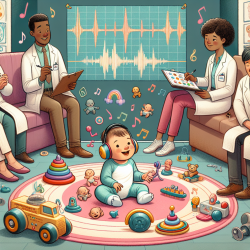Introduction
In recent years, the utilization of complementary practices such as meditation, yoga, guided imagery, and progressive relaxation has seen a significant rise among U.S. adults. A comprehensive study titled "Prevalence and 20-year trends in meditation, yoga, guided imagery and progressive relaxation use among US adults from 2002 to 2022" offers valuable insights into these trends. As practitioners dedicated to enhancing children's outcomes, understanding these trends can help refine our approaches and encourage further research into effective therapeutic strategies.
Understanding the Trends
The study analyzed data from 134,959 participants over five cycles of the National Health Interview Survey. The findings revealed substantial growth in the use of these practices over the past two decades. Meditation was used by 18.3% of adults, yoga by 16.8%, and guided imagery/progressive relaxation by 6.7%. This growth was consistent across various sociodemographic and health strata, with notable increases among older adults, those not accessing mental health care, and less educated groups.
Implications for Practitioners
For practitioners in speech-language pathology and related fields, these findings underscore the importance of integrating complementary practices into therapeutic frameworks. Here are some actionable insights:
- Holistic Approach: Incorporate meditation and yoga as part of a holistic therapeutic approach to address both mental and physical well-being.
- Accessibility: Leverage digital platforms to make these practices more accessible to diverse populations, including underrepresented groups.
- Tailored Interventions: Customize interventions to meet the specific needs of different demographic groups, considering factors such as age, education, and access to mental health care.
- Research and Evaluation: Encourage further research to evaluate the effectiveness and safety of these practices, particularly for children and adolescents.
Encouraging Further Research
While the study provides a robust foundation, there is a need for ongoing research to explore the long-term effects and potential risks of these practices. Practitioners should advocate for studies that focus on children and adolescents, as their developmental needs may differ from adults. By contributing to this body of knowledge, we can ensure that complementary practices are used safely and effectively to support children's growth and development.
Conclusion
The increasing prevalence of meditation, yoga, guided imagery, and progressive relaxation highlights their potential as valuable tools in therapeutic settings. By understanding and applying the insights from this study, practitioners can enhance their skills and improve outcomes for children. To delve deeper into the research, I encourage you to explore the original study: Prevalence and 20-year trends in meditation, yoga, guided imagery and progressive relaxation use among US adults from 2002 to 2022.










